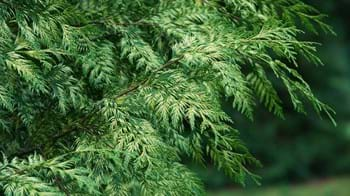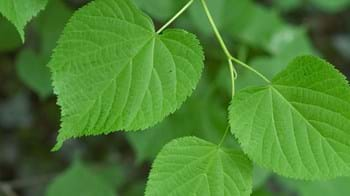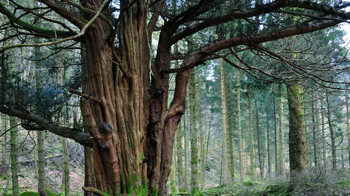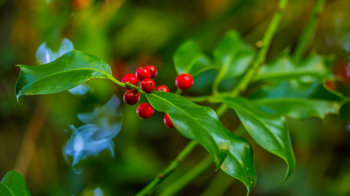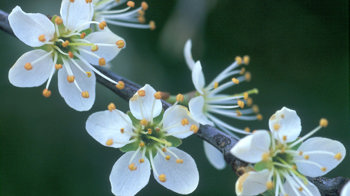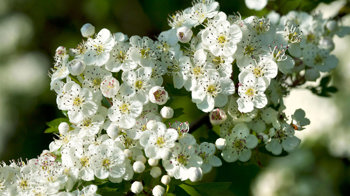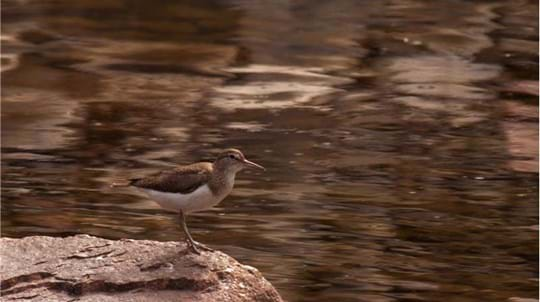
Balmacaan
Lewiston Drumnadrochit

Woodland Trust wood
33.51 ha (82.80 acres)
NH499289
Explorer 416
OS Landranger 26
Balmacaan is part of a major concentration of ancient woodlands and makes a picturesque backdrop to the village of Drumnadrochit on the western shore of Loch Ness. It’s a wonderful place to explore, with amazing views, giant trees, outstanding wildlife, ancient ruins, and picturesque villages.
The wood once formed the grounds of the Earl of Grant’s Balmacaan House where you’ll find rare and intriguing plants, animals and fungi. A prominent feature of Balmacaan is Craigmonie, a rocky outcrop capped with gnarled Scots pine, which offers a spectacular view of Loch Ness.
Features
- Parking at site
- Parking nearby
- Public access
- Spring flowers
How to get to Balmacaan
Balmacaan (33.5 hectares/82.8 acres) is on the western outskirts of the village of Drumnadrochit, by Loch Ness, on the A82.
The wood is approximately 1km (0.6 miles) along a waymarked route from the Tourist Information Centre in the middle of the village.
Drumnadrochit is a village that lies 16 miles (26km) south west of Inverness on the A82. From the main car park in Drumnadrochit, head south on the A82 for about 250 metres then turn right onto a minor road. After around 100 metres, bear left along a track which leads to the main entrance of the wood.
The nearest train station is in Inverness, 30.3km (18.8 miles) away.
Visit National Rail for more information.
Regular bus and coach services are available from Inverness to Drumnadrochit. The village is also on the main coach route from Inverness to Portree on Skye and to Fort William.
All services stop close to the main car park in the middle of Drumnadrochit, approximately 1km (0.6 miles) from the wood.
Visit Traveline for more information.
Facilities and access
The entrance to Craigmonie Wood, which is adjacent to Balmacaan, is signposted from the main road. The route follows 350 metres of flat pavement and tarred roads, with a short, sloping section towards the end of the road. From there, 150 metres of gently sloping, gravel track takes you to the main entrance.
A small parking area for up to three cars is available at the main entrance. The centre of the track is higher than the wheel tracks, so drivers of lower vehicles are advised not to use this. Additional public parking is available at the main car park in the village centre, about 1km (0.6 miles) from the wood.
Accessible public toilets are available at the main car park in the centre of Drumnadrochit, about 1km (0.6 miles) from the wood.
Wildlife and habitats
Animals
Balmacaan is home to an abundance of uncommon and interesting wildlife, including the acrobatic red squirrel. The shy and secretive pine marten is also found at Balmacaan - look for their distinctive wiggly scats which are a tell-tale sign of their presence. There are also many bird species to spot including crossbill, tawny owl, redstart and great spotted woodpecker.
Trees, plants and fungi
Balmacaan is home to a collection of North American conifers, and many of them are giants. Here you can find some of the UK’s largest giant sequoia, Lawson's cypress, western red cedar and Douglas fir trees, some of which are over 50 metres tall and 7 metres in girth. You can also find scatterings of bluebell and dog’s mercury in spring, along with mix of native broadleaf trees.
Habitats
Balmacaan is part of a major concentration of ancient woodlands along Loch Ness. The wood is mainly made up of native broadleaves dominated by mature oaks. There is also a collection of imposing giant conifers, some of which are thought to have been planted as early as 1852. A small stream crosses the wood, and a pond, known as ‘the duck pond’, which originated as a glacial kettle hole, can be found at the southern end of the wood.
We bought Balmacaan in 1984. It was our first Scottish site.
About Balmacaan
History
Overlooking Loch Ness and surrounded by fertile farmland at the foot of two glens, it is likely that there has been human activity here since early times. Craigmonie is a natural lookout point and it is thought that it was once surmounted by a prehistoric fort. The area is a Scheduled Ancient Monument.
The wood sits in a landscape rich in history: Craigmonie is named after a vicious siege of the Norse King Monie, and St Drostan is said to have preached in Urqhart and lived off the land.
Balmacaan Estate
In 1509, King James IV granted the lands, which included Balmacaan, to the Grant family of Seafield. The family established a homestead in the south-east corner of the wood, and successive generations made additions and improvements to the mansion.
The woodland at Balmacaan was an important part of the estate. There are historical records from the 16th century detailing careful management of the wood as an economic asset.
In the 19th century, new exotic trees including the giant sequoias were planted at Balmacaan. Other exotic species were planted in an arboretum which was just one of many features of the estate.
The Balmacaan Estate’s heyday was in the in the late 1800s, but after 1920, the fortunes of Balmacaan declined. The best timber had been felled during the Second World War and the estate was then broken up and sold in small lots, meaning local people bought holdings at a reasonable price. Balmacaan House fell into disrepair and was finally demolished in 1972.
Industry at Balmacaan
Throughout history, the woods were used for many products:
- Nuts, wood for barrel hoops, and building materials from hazel.
- Charcoal, barrel staves, bobbins and bark for tanning from birch.
- Clogs from alder.
- Spokes for cartwheels and charcoal from oak.
Things to do at Balmacaan
Walking
Blue route (Balmacaan Giants)
(2.5km/1.6 miles)
Entirely within Balmacaan, this clockwise route starts off as an 850-metre-long, wide, surfaced track with muddy sections, followed by a short, fairly steep, smooth, grassy slope. From here it leads onto a gently undulating, firmly surfaced path that is narrow in places. This latter part has short, moderately steep inclines and declines and muddy sections. A steep 300-metre decline joins the route back to the track.
White Route (Oakwood Walk)
(1km/0.6 miles)
This route starts off as a gravel track and continues up a fairly steep, grassy slope. From there it becomes a sloping, 600-metre track with an earthy surface that is generally firm with occasional uneven sections.
Red Route (Craigmonie Trail)
(1.6km/1 mile)
If following the route clockwise, it travels 50 metres along a wide, muddy, gravel track before turning right to a steep, narrow slope that is grassy and uneven underfoot. This takes you to Drumnadrochit and Loch Ness, with stunning views and wonderful woodland. From there, a sloping decline on a firm path takes you out of Balmacaan and into Craigmonie. Here, there is the option to take a long, wide path (waymarked green) which takes you back to the start, or to continue on the red route along a narrow path with short, steep gradients.


















































